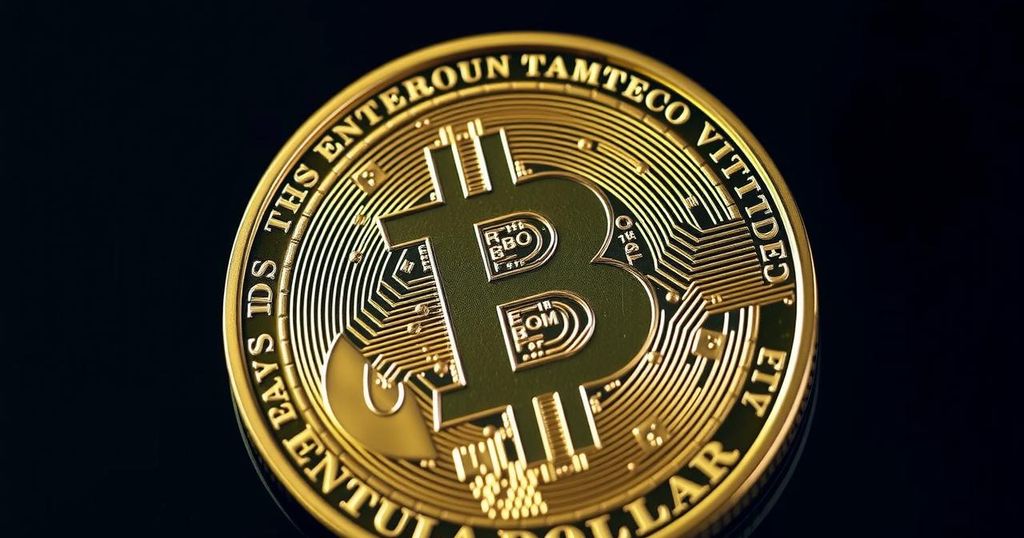Trump’s Crypto Project Seeks to Launch U.S. Dollar-Backed Stablecoin
Former President Donald Trump’s cryptocurrency venture, World Liberty Financial, is planning to introduce its own U.S. dollar-backed stablecoin. The project is still in the developmental phase, and while there is potential for significant profit, challenges surrounding regulation and competition with established players in the market remain.
Former President Donald Trump’s crypto initiative, World Liberty Financial, recently introduced its native token and is now reportedly aiming to develop a stablecoin backed by the U.S. dollar, as indicated in a recent report by Decrypt. Stablecoins, which are cryptocurrencies pegged on a 1:1 basis to fiat currencies such as the U.S. dollar or euro, have surged in popularity over the past three years, and should the report hold true, World Liberty would join the ranks of notable platforms like PayPal, Coinbase, and Robinhood, all of which are either offering or planning stablecoin alternatives. Currently, the development of the World Liberty stablecoin is in its early stages, requiring considerable time and effort from the team to ensure a safe and reliable product prior to its market introduction, as relayed by an anonymous source. Earlier announcements from World Liberty indicated that Rich Teo, cofounder of Paxos—a prominent stablecoin issuer known for its U.S. dollar-backed Paxos Standard Token (PAX)—would take the lead in the stablecoin and payments sector for World Liberty. However, the creation of a stablecoin encompasses more than merely appointing a leadership figure; it necessitates substantial capital infusion and keen navigation through complex regulatory landscapes. Additionally, it must contend with established competitors such as Tether and USDC. To maintain a stablecoin’s value, it requires proper collateralization with fiat currency, a feature some projects have attempted to bypass, often with disastrous outcomes. A notable instance was the collapse of the Terra stablecoin in 2022, which resulted in significant financial losses. Despite the uncertain roadmap regarding the reliability of World Liberty’s envisioned stablecoin, there exists a potential for profit for the Trump family, especially considering Tether’s impressive record of $5.2 billion in profits during the first half of 2024 alone. World Liberty Financial, introduced in early September—shortly before the elections—is described as a decentralized finance money market. Their WLFI governance token enables holders to participate in decision-making and governance related to the cryptocurrency project, though it is non-transferable and does not yield returns. Despite efforts to whitelist over 100,000 accredited investors to raise $300 million during the initial sale, the project has only managed to accumulate $14 million, representing a mere 4.7% of the tokens available for sale.
The rapid adoption of cryptocurrencies and blockchain technology has paved the way for various projects exploring different forms of digital assets. Among these are stablecoins, which act as a bridge between traditional fiat currencies and the cryptocurrency market. Given the volatility commonly associated with cryptocurrencies, stablecoins have emerged as a solution to provide a stable means of exchange that reflects the value of established currencies. Entities such as PayPal and Coinbase have recognized this trend and are actively participating in the stablecoin market. The entrance of World Liberty Financial into this landscape, especially with ties to a prominent public figure like Donald Trump, draws attention to the evolving cryptocurrency market and raises questions regarding regulatory compliance and competition.
In summary, World Liberty Financial, spearheaded by Donald Trump’s crypto venture, is advancing its transition into the stablecoin market, aiming to create a U.S. dollar-backed stablecoin. While initial developments are promising, the project faces significant challenges, including the requirement for substantial resources and the necessity of adhering to regulatory frameworks. The potential profitability of such a venture amplifies its appeal amidst an ever-evolving cryptocurrency landscape, but the success of World Liberty’s stablecoin remains contingent on navigating these complexities effectively.
Original Source: fortune.com







Post Comment